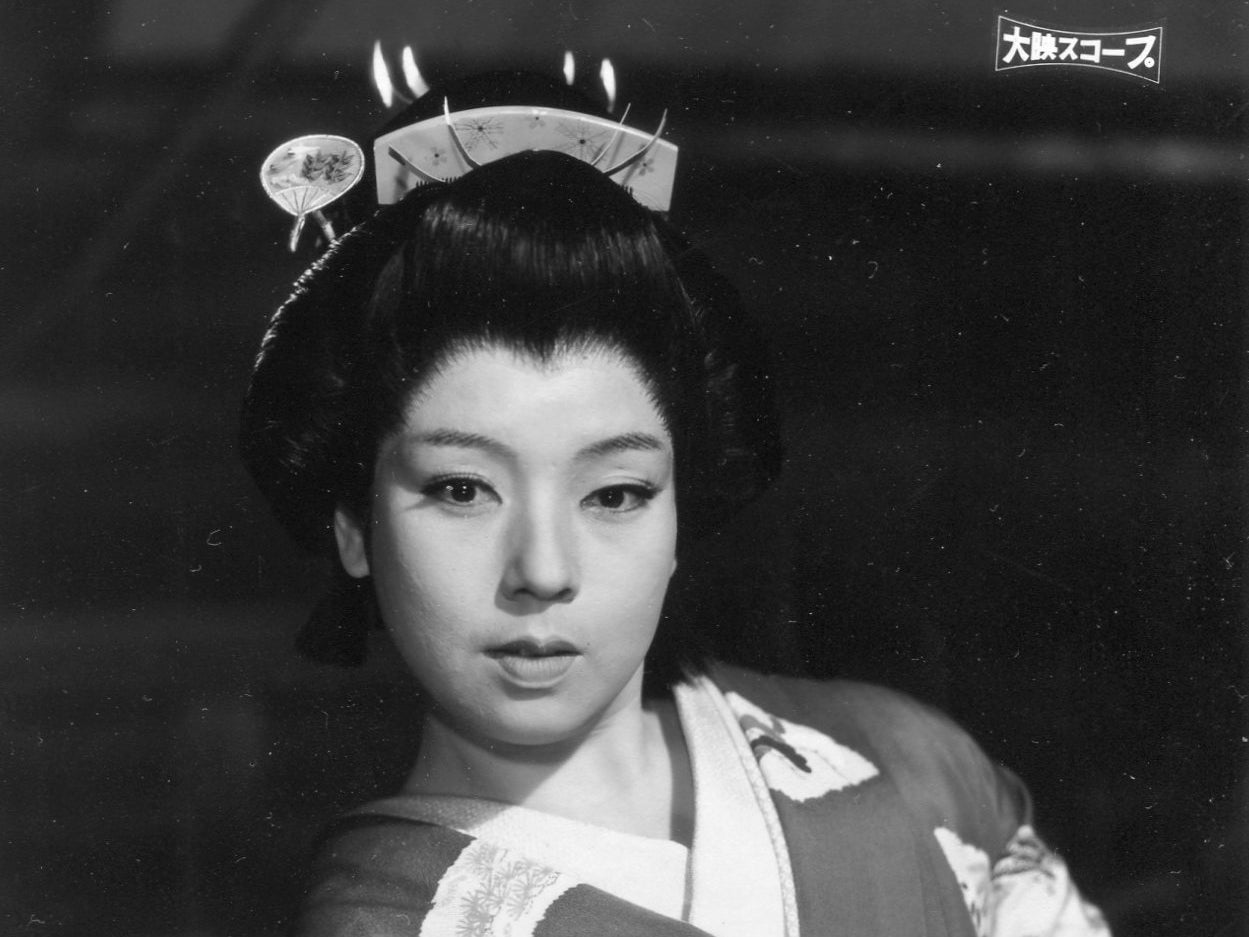Machiko Kyo: Actor who defied tradition to reshape Japanese cinema
Finding fame in the 1950s, the acclaimed ‘Rashomon’ star was known for playing princesses, geishas and prostitutes

Machiko Kyo, who has died aged 95, was a revered Japanese actor whose sensuous and expressive performances – notably in Akira Kurosawa’s 1950 classic, Rashomon – made her one of her country’s first internationally recognised film stars.
Once a dancer at a Tokyo burlesque house, Kyo went on to become a prolific actor who appeared in plays, television series and more than 80 films.
At the peak of her career in the 1950s, she made five films a year with directors such as Teinosuke Kinugasa, Kon Ichikawa, Kenji Mizoguchi, Mikio Naruse and Yasujiro Ozu.
When Kyo began acting in the mid-1940s, few westerners had ever seen a Japanese film – or cared to, given the country’s role in the Second World War. But after the release of Rashomon, an exploration of truth and justice that received the Golden Lion at the Venice film festival, samurai period dramas became box-office draws and film-festival sensations.
Frequently it was Kyo who received top billing. She was among Japan’s earliest female stars, known for playing elegant and assertive princesses, noblewomen, geishas and prostitutes.
Her performances marked a striking departure from traditional roles for Japanese actresses. “In its first couple decades, all women’s roles were played by men,” said Jasper Sharp, author of the Historical Dictionary of Japanese Cinema. “In the Thirties, women were cast as demure figures. You’re either a mother keeping house or a very loyal daughter.”
Kyo, he added, “was playing modern-day characters” and doing so with such frequency and acclaim that for roughly a decade western viewers might have thought she was the only actress in Japanese cinema.”
For 1953’s Gate of Hell, one of Japan’s first colour films, Kyo played a luminous but tragic wife who is rescued by a samurai. The film won the top prize at the Cannes film festival and received an honorary Oscar for best foreign film, several years before the category was formally incorporated into the Academy Awards.
That same year, Kyo played an enchanting – and undead – noblewoman in Mizoguchi’s Ugetsu, a runner-up at the Venice Film Festival that the critic Roger Ebert hailed as “one of the greatest of all films”. Dressed as a traditional Noh-drama heroine, she seduces a lowly potter before he realises she is a ghost yearning for love.
In the US The National Board of Review of Motion Pictures recognised her “for the modernisation of traditional Japanese acting”.
By most accounts, Kyo was born Motoko Yano in Osaka in 1924. A 1955 profile in The New York Times reported that she was born in Mexico, where her father worked as an engineer. Her parents separated, according to news reports, and Kyo was raised by her mother, a geisha, in the slums of Osaka.
Inspired by music hall visits with an uncle, she began dancing, and by the time she was a teenager, she had joined a girls’ revue troupe and changed her name.
Kyo made her film debut in Tengu Daoshi in 1944. Five years she later was signed by the film studio Daiei, where producer Masaichi Nagata began promoting her as a sex symbol in the mould of Jane Russell and Marilyn Monroe, seeking inroads with western audiences.
Rashomon marked a breakthrough for everyone involved. Directed by Kurosawa and adapted from a short story by Ryunosuke Akutagawa, the film featured a non-linear narrative told through flashbacks, with four conflicting stories focused on the rape of Kyo’s character and the killing of her husband, a samurai.
The film was deemed “incomprehensible” by Nagata but won an honorary Oscar, set box-office records for a subtitled picture and popularised a concept known as “the Rashomon effect” in which an event is remembered in different, even contradictory ways. Critic Pauline Kael called Rashomon “the classic film statement of the relativism, the unknowability of truth”.
Kyo later starred in Mizoguchi’s 1955 film Princess Yang Kwei-Fei, playing a maid turned royal, and one year later headlined the director’s last feature, Street of Shame, demonstrating her range as a coarse, westernised prostitute who frantically eats, smokes and chews gum.
She also starred in 1959’s Floating Weeds, a widely celebrated, moody family drama directed by Ozu. That year she also played a wife who is manoeuvred by her husband into having an affair in Odd Obsession (1959). She was featured as the wife of a masked burn victim in The Face of Another (1966), based on a novel by Kobo Abe.
Kyo appeared in just one American production, The Teahouse of the August Moon (1956), as a geisha named Lotus Blossom; her co-star Marlon Brando was cast in “yellow face” as an Okinawan villager. She largely stopped acting in movies after Daiei filed for bankruptcy in 1971, although she made a notable return in the 1976 comedy Tora’s Pure Love, part of a long-running film series starring Kiyoshi Atsumi as a bumbling everyman.
Kyo never married, according to Japanese news reports. In interviews, she spoke of acting as her life’s work and overriding interest, scarcely rivalled by her collection of wooden dolls that drew interviewers’ notice in the 1950s.
“During the rehearsals before the shooting, I was left virtually speechless by Kyo Machiko’s dedication,” Kurosawa wrote in his memoir Something Like an Autobiography, using the traditional Japanese order of Kyo’s name. “She came in to where I was still sleeping in the morning and sat down with the script in her hand. ‘Please teach me what to do,’ she requested, and I lay there amazed.”
Machiko Kyo, Japanese actor, born 25 March 1924, died 12 May 2019
© Washington Post
Subscribe to Independent Premium to bookmark this article
Want to bookmark your favourite articles and stories to read or reference later? Start your Independent Premium subscription today.

Join our commenting forum
Join thought-provoking conversations, follow other Independent readers and see their replies